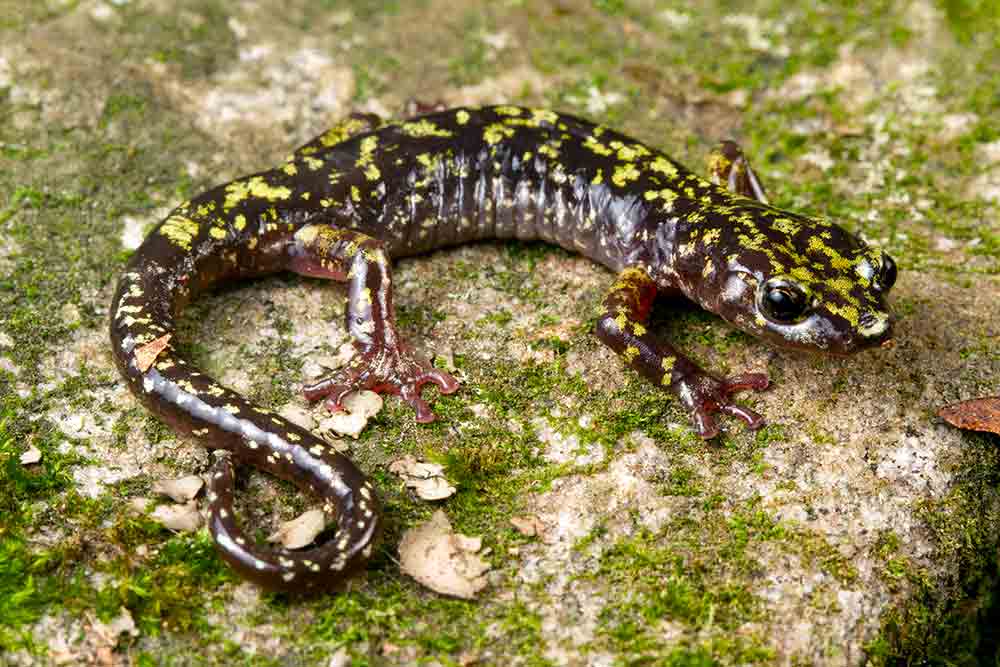The center claims that there are between 200 and 500 Hickory Nut Gorge salamanders left in existence.
The Hickory Nut Gorge salamander (Aneides caryaensis), native to North Carolina and only known to exist in a single 14-mile-long gorge in the state’s Blue Ridge Mountains, is in need of protections under the Endangered Species Act, according to the Center for Biological Diversity.
The center claims that there are between 200 and 500 Hickory Nut Gorge salamanders left in existence, and they may perish without protections. It has since petitioned the U.S. Fish and Wildlife Service to protect the amphibian and to designate critical habitat for the small green salamander.
“Without federal protection, this precious salamander will go extinct,” Will Harlan, senior campaigner and scientist at the Center for Biological Diversity said in a statement released to the media. “It has been clinging to the gorge’s walls for millions of years. But now, to keep holding on, it urgently needs the Fish and Wildlife Service to act.”
Salamanders Resisting Global Warming Better Than Previously Thought
Social Distancing Helps Salamanders Reduce Rate Of Bsal Transmission
According to the center, the Hickory Nut Gorge salamander was first discovered in 2020 and spends most of its life in trees and rock outcroppings. Currently, the state’s North Carolina Wildlife Resources Commission is working with the Center and Defenders of Wildlife to protect the green salamander’s population.
Hickory Nut Gorge Salamander Information
The Hickory Nut Gorge salamander is a member of the subgenus Castaneides, with the genus Aneides the only members of the subgenus. These amphibians are known to occur in the eastern half of North America. The salamander is known to nest on rock faces. It is only known to occur in 25 localities within the Hickory Nut Gorge and because of this, most populations have very low densities with just a few salamanders in each known locality. because of this, there is a high level of inbreeding within the species. Factors that threaten this species include habitat loss, real estate development, fragmentation due to tourism and transportation and energy infrastructure construction.



